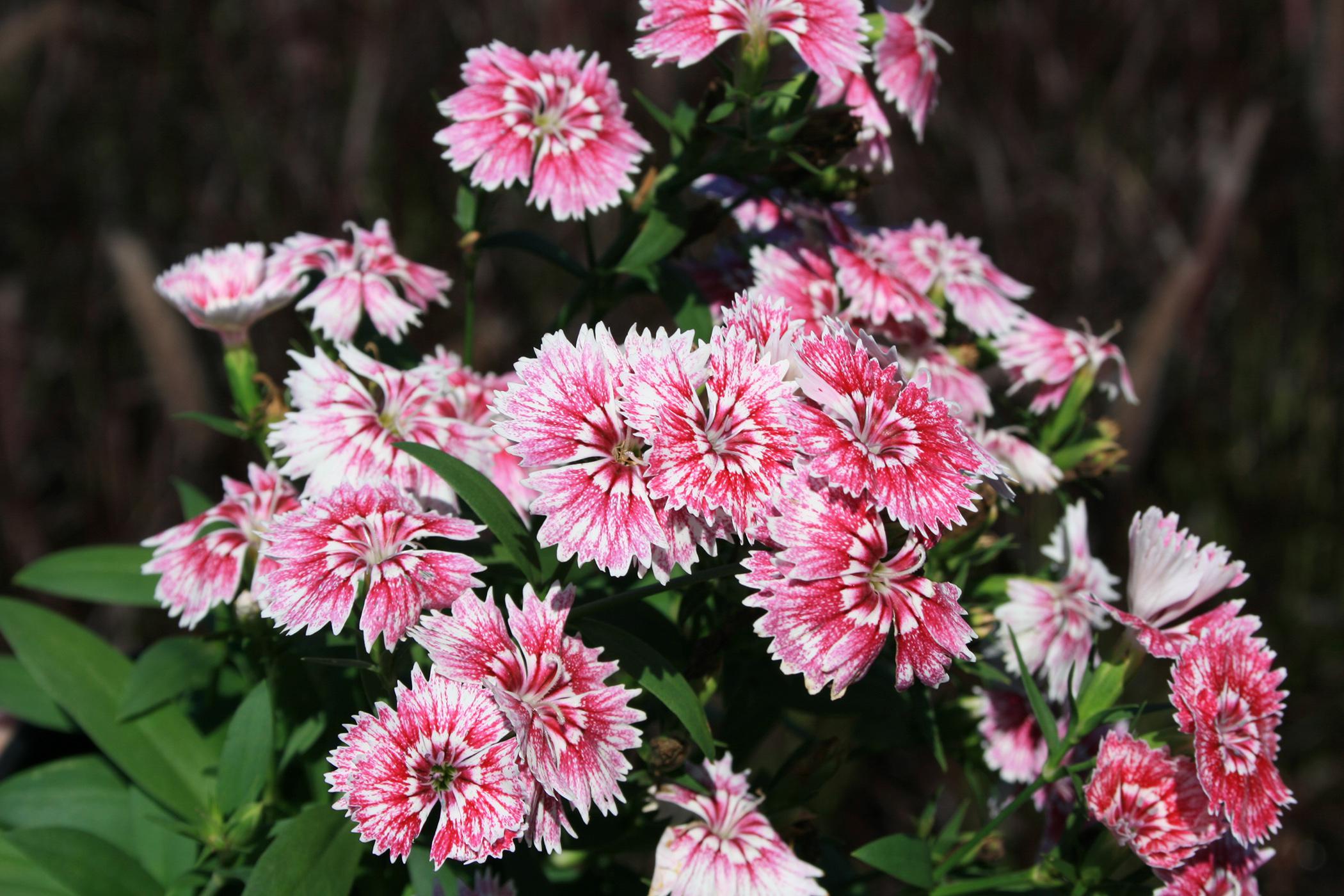Information Possibly Outdated
The information presented on this page was originally released on October 1, 2012. It may not be outdated, but please search our site for more current information. If you plan to quote or reference this information in a publication, please check with the Extension specialist or author before proceeding.
Dianthus spice up fall gardens, salads
Gardeners getting ready for fall planting should consider dianthus, a versatile group of plants that grow well in Mississippi gardens and landscapes.
Dianthus come in annual and perennial selections. There are cool season and warm season varieties. I really like their color palette – we can grow a wide variety of pinks, purples and whites, along with bicolors. Dianthus is one flower that lets us keep a sense of landscape and garden color continuity across all the seasons.
With fall under way and speculation that maybe this year we will actually have a winter, now is the perfect time to start planting dianthus.
For those living along in the coastal region, dianthus is a great choice for fall color. In the southern part of the state, you can plant dianthus from now until early spring for an outstanding color display. Fall planting allows the plants to develop a robust root system, which results in a beautiful and colorful display next spring.
Low temperatures will probably damage flowers and cause the foliage to turn purplish, but the plants will recover.
In north Mississippi, protect fall plantings from cold temperatures or simply plant new plants next spring for a great color display.
My favorite dianthus for the cool season has to be the Telstar series. This series has great colors that range from carmine rose and pink to purple and one that is almost red. There are a couple of pretty bicolors that are called picotees.
Telstar is the perfect choice for mass planting in the landscape. They grow uniformly, have a sturdy habit and get only about 10 inches tall and wide. Always plant in full sun in well-drained soil. Telstar dianthus is susceptible to root disease problems if the soil is consistently wet, which is always a concern in Mississippi’s cool and wet fall and winter seasons.
Telstar dianthus is a moderate to heavy feeder. At planting, fertilize with a good, slow-release fertilizer and apply a water-soluble fertilizer monthly. After the first flowering, prune the plants back about 3 inches to encourage more lateral growth and even more flowers.
Dianthus is a great choice for colorful combination containers. Try pairing it with pansies and viola for a great, cool-season container. The new Cool Wave pansies are an improved trailing pansy that will be a fantastic spiller plant for containers.
One of the most surprising things about dianthus flowers is that they are edible. To try them, first wash them gently and pat dry. Hold the flower base and pull on the petals to separate. Add these to any fresh lettuce or fruit salad. The colorful petals are frilly and add interest to meals.
If you intend to eat the flowers, be careful when selecting plants with edible flowers from nurseries and garden centers. You don’t know how they have been treated during the production phase. But there’s no need to worry. Dianthus are easy to grow from seed, and you can grow exactly the varieties and colors you want.








